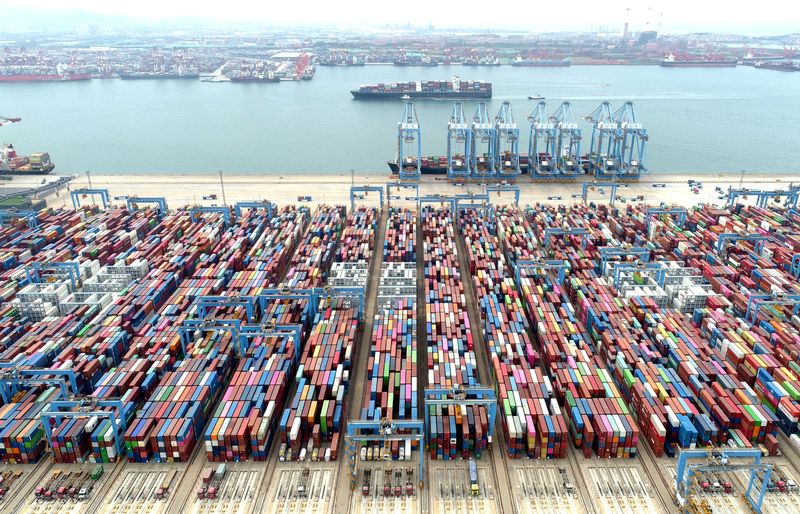
China’s export growth quickens amid trade risks, imports surprise
BEIJING (Reuters) – China’s export growth picked up steam in December, while imports recovered, closing out the year on a positive note as the world’s second-largest economy braces for mounting trade risks with the incoming U.S. administration.
Outbound shipments in December rose 10.7% year-on-year, customs data showed on Monday, beating 7.3% growth forecast in a Reuters poll of economists, and improving from November’s 6.7% increase.
Imports surprised to the upside with 1.0% growth, the strongest performance since July 2024. Economists had expected a 1.5% decline.
U.S. President-elect Donald Trump, set to return to the White House next week, has proposed hefty tariffs on Chinese goods, sparking fears of a renewed trade war between the two superpowers.
Adding to the challenges, unresolved disputes with the European Union over tariffs of up to 45.3% on Chinese electric vehicles threaten to hinder China’s ambitions to expand its auto exports.
Meanwhile, China’s trade surplus grew to $104.8 billion last month, up from $97.4 billion in November.
Export momentum has been a critical driver for China’s economy, which remains weighed down by a prolonged property market slump and fragile consumer confidence.
There have been signs, however, of stabilisation following China’s stimulus push in recent months.
Factory activity remained in modest expansion for the third consecutive month, while services and construction recovered in December, an official survey showed.
South Korea, a key indicator of China’s imports, reported a 8.6% increase in shipments to China in December, suggesting resilience in demand for technology products.
China’s top leaders have pledged to loosen monetary policy and adopt a more proactive fiscal policy in 2025, aiming to offset external pressures and revitalise domestic demand.
The government is targeting economic growth of around 5% for the year, a goal that had proved challenging to achieve at times in 2024.

